10 The Best Advisory Guide: Travel To Saudi Arabia
Travel to Saudi Arabia, a country that spans the majority of the Arabian Peninsula, is a land of profound historical significance, rich cultural heritage, diverse climatic zones, and a rapidly evolving education system. Known as the birthplace of Islam, it houses the two holiest cities in the Islamic world, Mecca and Medina. Beyond its religious significance, the Kingdom is a fascinating destination for travellers seeking to explore the best way to travel to Saudi Arabia and its ancient archaeological sites, experience its traditional and modern culture, and understand its commitment to education and development.
Table of Contents
Exploring Travel to Saudia Arabia:
Exploring Saudi Arabia offers a unique journey through a land rich in cultural heritage, ancient history, and breathtaking natural landscapes. For Muslims, Saudi Arabia holds profound spiritual significance as the birthplace of Islam and the location of its two holiest cities, Mecca and Medina. Every year, millions of Muslims from around the globe converge on Mecca to perform Hajj, a pilgrimage that is one of the Five Pillars of Islam and a once-in-a-lifetime obligation for those who are physically and financially able.
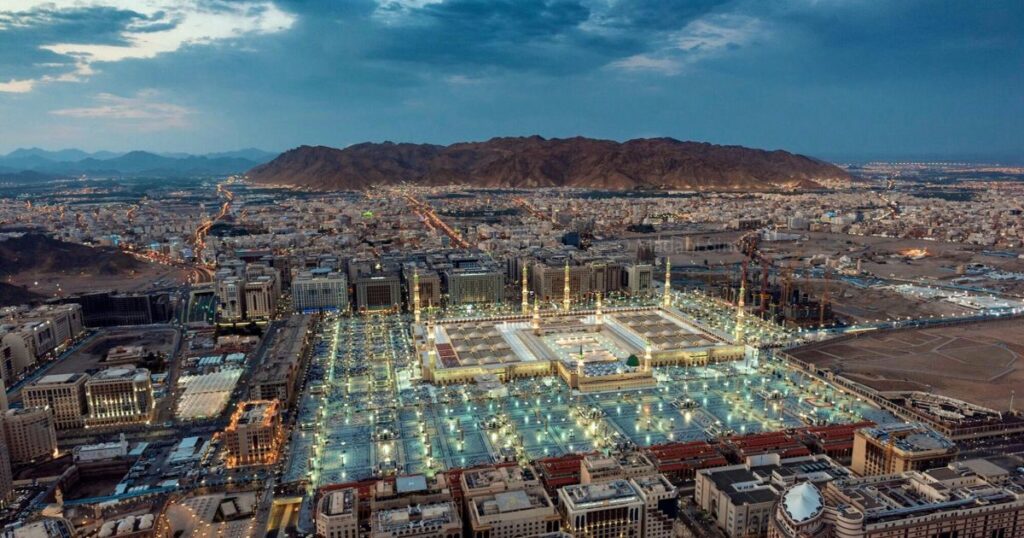
Additionally, the Umrah, a pilgrimage that can be undertaken at any time of the year, offers a more personal spiritual experience, allowing Muslims to walk in the footsteps of the Prophet Muhammad. These religious rites are deeply embedded in the fabric of Muslim life and offer profound insights into the faith and unity of the Muslim community. Beyond these spiritual journeys, Saudi Arabia’s diverse regions—from the verdant mountains of Asir to the historic sites of Al-Ula and the vibrant modernity of Riyadh and Jeddah—invite travelers to discover a country that is at once deeply traditional and rapidly transforming.
Historical Insights
The history of Saudi Arabia is as ancient as it is complex. The Arabian Peninsula is one of the earliest places on earth where human civilization is believed to have originated. Ancient trade routes crisscrossed the region, bringing wealth and cultural exchanges. The rise of Islam in the 7th century forever changed the course of the region’s history, with Mecca and Medina becoming pivotal religious centres.
The tapestry of Saudi Arabian history is woven with threads of resilience, strategic alliances, and the unification of diverse tribes under the banner of Islam. The land has been a crossroads of civilizations, from the Nabateans who built the splendid city of Al-Ula, now a UNESCO World Heritage site, to the ancient trading civilization of the Dilmun. The foundation of the modern Kingdom, however, was laid by Abdulaziz Ibn Saud, whose conquests and diplomatic acumen not only unified the disparate regions of the Arabian Peninsula but also set the stage for the nation’s future as a key player on the world stage.
The discovery of oil in the 20th century catapulted Saudi Arabia into global prominence, funding a developmental leap that transformed its infrastructure and societal structures. This era also marked the beginning of Saudi Arabia’s complex relationship with the broader world, balancing its vast oil resources’ economic opportunities with traditional values at its core.
The modern state of Saudi Arabia was founded in 1932 by Abdulaziz Ibn Saud, uniting the four regions into a single country through a series of conquests that began in 1902. Since the discovery of oil in the 1930s, Saudi Arabia has transformed into a global energy superpower, significantly impacting its socio-economic landscape.

Culture
Saudi Arabian culture is deeply rooted in Islamic traditions and Arab customs. The society is family-oriented, with strong ties to tribal affiliations. Traditional dress is common, with men often wearing a thobe and women a abaya, reflecting a commitment to modesty prescribed by Islamic teachings.
Saudi culture, while deeply entrenched in the principles of Islam, showcases a mosaic of traditions that reflect the diverse tribes and regions making up the Kingdom. Poetry and storytelling, deeply revered in Arab culture, flourish here, with contemporary Saudi authors and poets gaining international recognition.
Music and dance play integral roles in Saudi social life, with traditional forms like the Ardah, a male sword dance accompanied by drums and spoken poetry, being a spectacular sight. However, the country has recently seen an influx of international music and entertainment, culminating in events that have hosted global celebrities, marking a significant shift in cultural openness.
Saudi cuisine is a delicious exploration of flavours, with dishes like Kabsa, a fragrant rice and meat dish, and Jareesh, a wheat-based stew, being staples. The country is also known for its hospitality, where serving coffee and dates to guests is a customary sign of welcome.
The introduction of cinemas and the revival of public concerts underscore a renaissance of the arts, fueled by the government’s Vision 2030 plan, which aims to diversify the economy and promote cultural tourism. This plan not only aims to reshape the economy but also to showcase Saudi Arabia’s rich heritage and contemporary artistic expression on the global stage.
In recent years, the Kingdom has opened its doors wider to international influences and tourism, hosting cultural festivals like the Riyadh Season, and investing in the arts and entertainment sectors, signifying a blend of tradition and modernity.

Weather
The Kingdom’s vast expanse includes diverse climatic zones. The majority of the country experiences a desert climate with extreme heat during the day and cool temperatures at night. Summers are intensely hot, especially in cities like Riyadh, where temperatures can soar above 45°C (113°F). Coastal regions, such as Jeddah, enjoy a milder climate due to their proximity to the Red Sea.
From the scorching Rub’ al Khali (Empty Quarter) to the verdant mountains of Asir, Saudi Arabia’s climate and geography offer stark contrasts. The Empty Quarter, the largest contiguous sand desert in the world, presents a landscape of breathtaking beauty yet extreme conditions, challenging even the most experienced adventurers.
Conversely, the Asir region, with its terraced agriculture and cooler climate, offers a glimpse into Saudi Arabia’s potential for agricultural diversity. The annual Khareef, or monsoon season, transforms parts of this region into lush, green landscapes, drawing visitors from across the country and beyond.
This diversity of climates impacts not just the lifestyle and economic activities of the regions but also offers a unique selling point for tourism, showcasing Saudi Arabia’s ability to surprise and enchant visitors with its natural diversity.
The Asir region, by contrast, experiences a semi-arid climate with cooler temperatures and more precipitation, making it a popular destination for locals and tourists seeking relief from the summer heat.
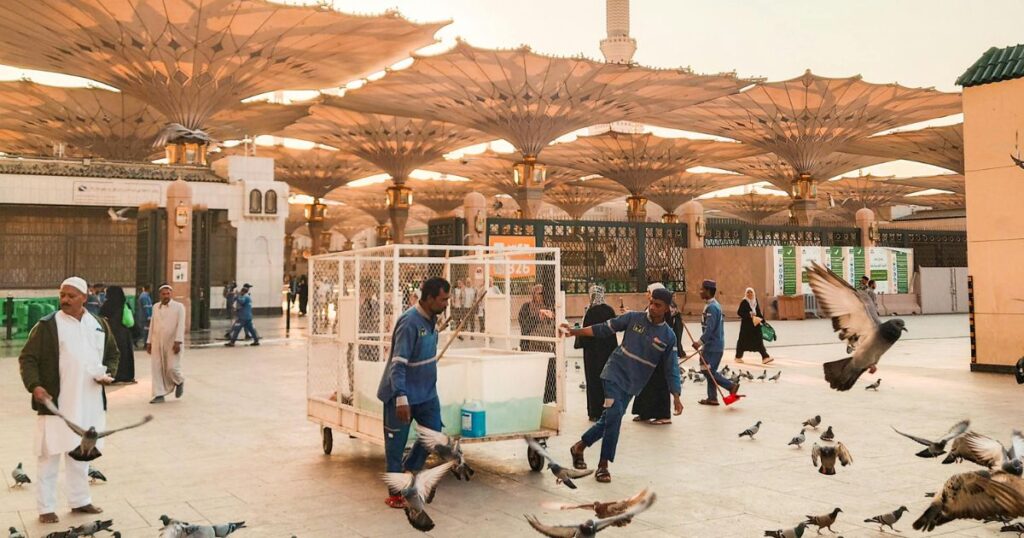
Education System
Education is a cornerstone of Saudi Arabia’s vision for the future. The government has made significant investments in education, from primary through to higher education, emphasizing the importance of developing a skilled and knowledgeable workforce to diversify its economy beyond oil.
The education system is free for citizens, and the curriculum strongly emphasizes science, mathematics, and technology, alongside Islamic studies. The country is home to several top-ranking universities, such as King Abdulaziz University and King Saud University, which offer a wide range of programs in various fields.
Saudi Arabia’s commitment to education as a driver of socio-economic transformation is evident in its substantial investments in local and international educational initiatives. The Kingdom’s Vision 2030 places a strong emphasis on developing a knowledge-based economy, and education is pivotal in achieving this goal.
Higher education institutions in Saudi Arabia are at the forefront of research in fields such as petrochemicals, renewable energy, and water desalination, reflecting the country’s strategic priorities and its role as an oil-rich nation. Moreover, the push towards internationalization of education has seen Saudi universities climbing global rankings and forging partnerships with prestigious institutions worldwide.
Scholarship programs, such as the King Abdullah Scholarship Program, enable thousands of Saudi students to study abroad each year, fostering cross-cultural exchange and building a workforce equipped with global competencies. These educational reforms and initiatives are not just about economic diversification; they are about preparing the nation’s youth to lead in a rapidly changing world, ensuring that Saudi Arabia’s future is as dynamic and promising as its rich history.
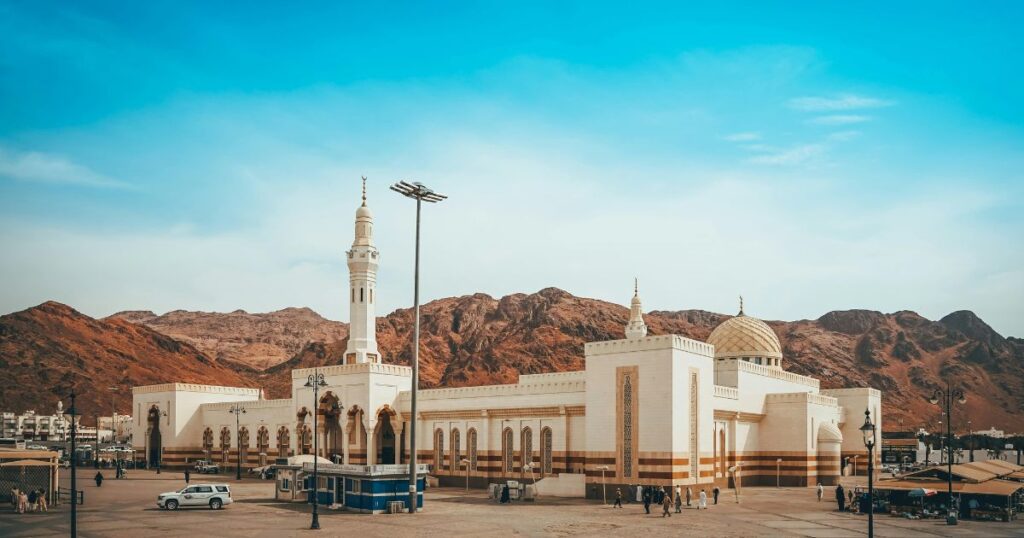
Exploring Saudia Arabia:
Travelling to Saudi Arabia offers an unparalleled opportunity to immerse oneself in the depths of Islamic history, experience the warmth of Arabian hospitality, navigate the complexities of its desert and mountain landscapes, and witness a nation amid transformative change. With its doors increasingly open to the world, the Kingdom invites travellers and scholars alike to explore its treasures, understand its ambitious vision for the future, and engage with its people who are writing a new chapter in its long and storied history.
Exploring Saudi Arabia is to traverse the dunes of time, to witness a nation rooted in deep historical and religious traditions while boldly striding into a future of innovation and openness. The Kingdom’s landscapes tell tales of ancient trade and untouched natural beauty, while its cities buzz with the energy of cultural renaissance and economic transformation. From the echoes of history in its ancient ruins to the ambitious vision of its educational reforms, Saudi Arabia offers a complex, nuanced narrative that invites the world to discover its past, present, and future.
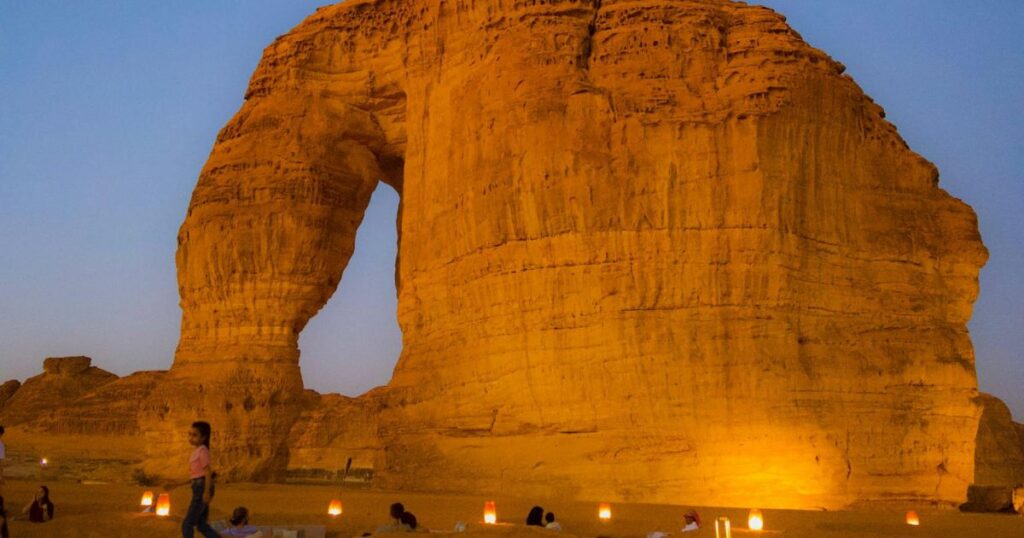
Exploring the Hidden Gems of Travel To Saudi Arabia
Saudi Arabia, a land shrouded in mystery and steeped in history, has recently opened its doors wider to international travellers, revealing its treasures that span from ancient archaeological sites to stunning natural landscapes. Beyond the religious significance of Mecca and Medina, which non-Muslims cannot visit, the country boasts a plethora of destinations that offer a glimpse into its rich heritage, diverse ecosystems, and vibrant culture. This article takes you through some of the best places to travel in Saudi Arabia, each telling a story of its own, waiting to be discovered and admired.
1. Al-Ula: The Open-Air Museum
Nestled in the northwestern part of Saudi Arabia, Al-Ula is a marvel of ancient civilizations, natural beauty, and architectural wonders. It is home to Madain Saleh, also known as Al-Hijr, the first UNESCO World Heritage site in Saudi Arabia. These well-preserved Nabatean tombs, carved out of towering sandstone mountains, echo the architectural finesse of Petra but without the crowds. Al-Ula’s landscape is a dramatic canvas, with its labyrinthine canyons, historic mud-brick villages, and expansive deserts. The recent development efforts aim to make Al-Ula a global destination for cultural and ecological tourism, making now the perfect time to visit before it gets crowded.

2. Riyadh: The Dynamic Capital
The heart of modern Saudi Arabia beats in Riyadh, a city where skyscrapers tower over traditional mud-brick buildings, showcasing the nation’s journey from its Bedouin roots to a bustling metropolis. The city is a mix of modernity and tradition, with attractions such as the Kingdom Centre Tower, offering breathtaking views, and the historic Al Masmak Fortress, providing insights into Saudi Arabia’s unification. The thriving culinary scene, bustling souks, and museums add layers to the travel experience in Riyadh, making it a must-visit for those looking to understand Saudi Arabia’s past, present, and future.
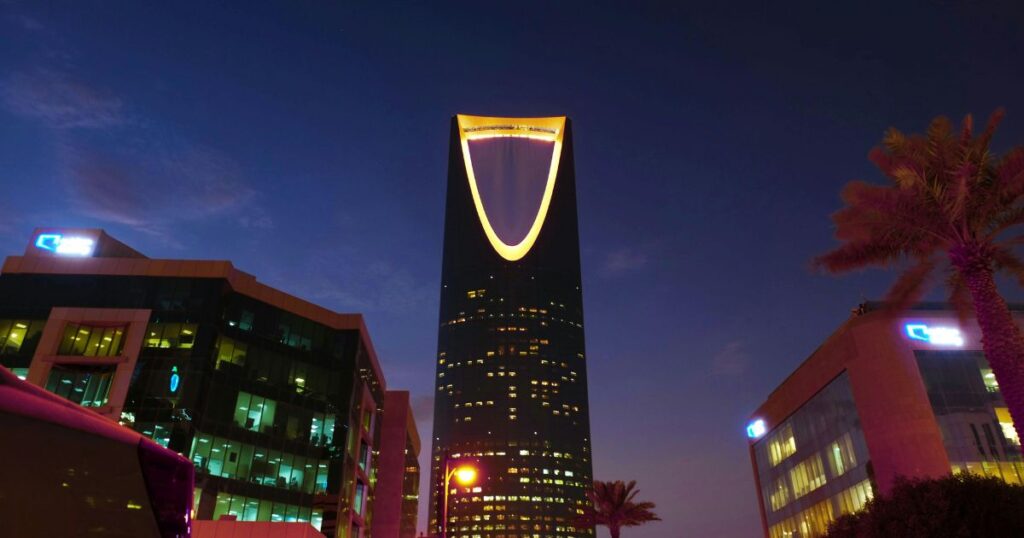
3. Jeddah: The Gateway to the Red Sea
Jeddah, the commercial capital and a cosmopolitan hub has historically been the gateway for pilgrims heading to Mecca. The city’s heart lies in its historic Al-Balad district, where centuries-old buildings made from coral stone stand testament to its rich trading history. Jeddah’s Corniche, stretching along the Red Sea, offers stunning waterfront views, sculptures, and modern entertainment options. The city is also the gateway to the Red Sea’s underwater wonders, making it a haven for divers exploring the vibrant coral reefs.

4. Asir National Park: A Breath of Fresh Air
Breaking the stereotype of Saudi Arabia’s desert landscape, Asir National Park offers lush mountains, dense forests, and a cooler climate. Located in the southwest, this region transforms with the seasonal monsoons, covering the landscape in a blanket of green. The park is a paradise for nature lovers and adventure seekers, offering hiking, bird watching, and the opportunity to explore traditional mountain villages. The unique cultural heritage of the Asir region, with its flower men known for wearing wreaths of herbs and flowers, adds a colourful touch to the visit.
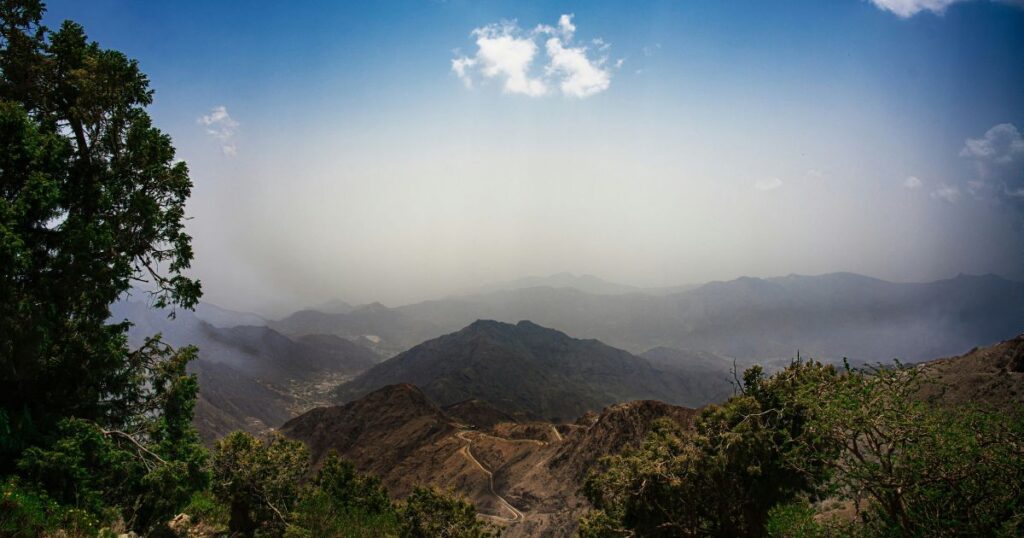
5. The Empty Quarter (Rub’ al Khali): The Desert Enigma
For those enchanted by the mystique of the desert, the Empty Quarter offers an unparalleled experience. It is the largest sand desert in the world, with dunes reaching heights of up to 250 meters. A journey into the Empty Quarter reveals the harsh beauty and vastness of the desert, offering a chance for contemplation and adventure. Whether it’s a guided tour, a camel trek, or a 4×4 adventure, the desert’s ever-changing landscapes and star-filled nights are unforgettable.
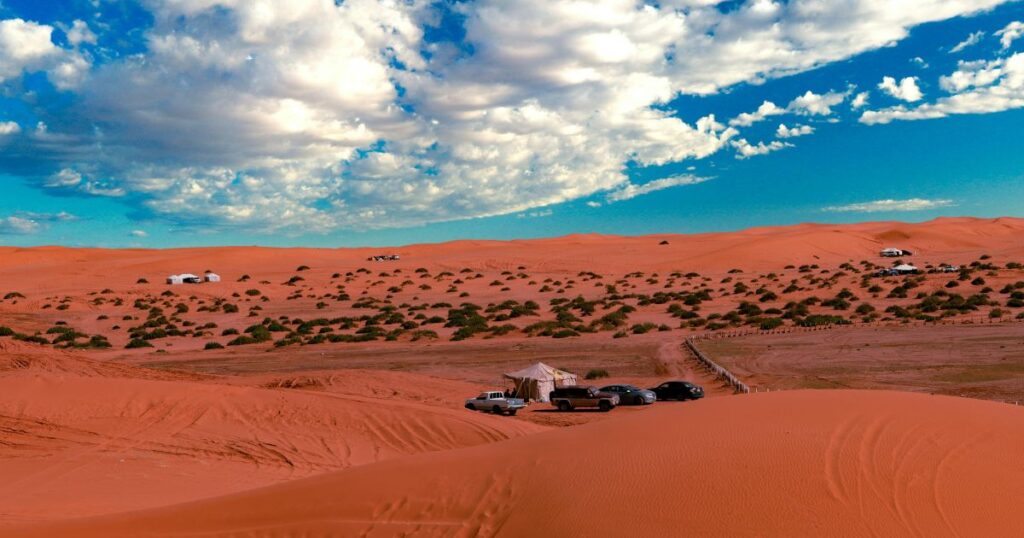
6. Najran: A Blend of History and Culture
Nestled in the southern part of Saudi Arabia, Najran is a hidden gem that boasts a unique blend of history, culture, and natural beauty. The region is home to Al-Ukhdood, an ancient archaeological site that tells tales of civilizations dating back to the 1st millennium BC. Najran’s diverse landscape is marked by lush agricultural plains, sprawling deserts, and rugged mountain terrains, offering a striking contrast to the more familiar desert images of the country. The city’s architecture, with its distinctive mud-brick buildings and colorful markets, reflects the rich heritage of the region. Najran’s cultural tapestry is further enriched by the presence of the Yam tribe, known for their vibrant traditions and warm hospitality.

7. Taif: The City of Roses
Often referred to as the “City of Roses,” Taif is situated in the mountains near Mecca and is renowned for its pleasant climate, scenic landscapes, and the annual rose festival. The city’s rose water, distilled from the petals of roses grown in its lush valleys, is prized for its quality and fragrance. Taif’s historical significance is highlighted by landmarks such as Shubra Palace, which now serves as a museum showcasing the region’s cultural heritage. The surrounding mountains offer an escape into nature, with hiking trails that meander through terraced gardens and fruit orchards, making Taif a refreshing retreat from the desert heat.

8. Al Khobar: A Coastal Metropolis
Positioned along the shores of the Arabian Gulf, Al Khobar is a vibrant city that serves as a bridge between the past and the present. Once a small fishing village, it has transformed into a bustling metropolis known for its waterfront Corniche, modern shopping malls, and beautiful beaches. Al Khobar’s proximity to the causeway connecting Saudi Arabia and Bahrain makes it a unique point of cultural and economic exchange. The city’s dining scene offers a taste of the world, with cuisines ranging from Middle Eastern to Asian and Western, reflecting its cosmopolitan nature.
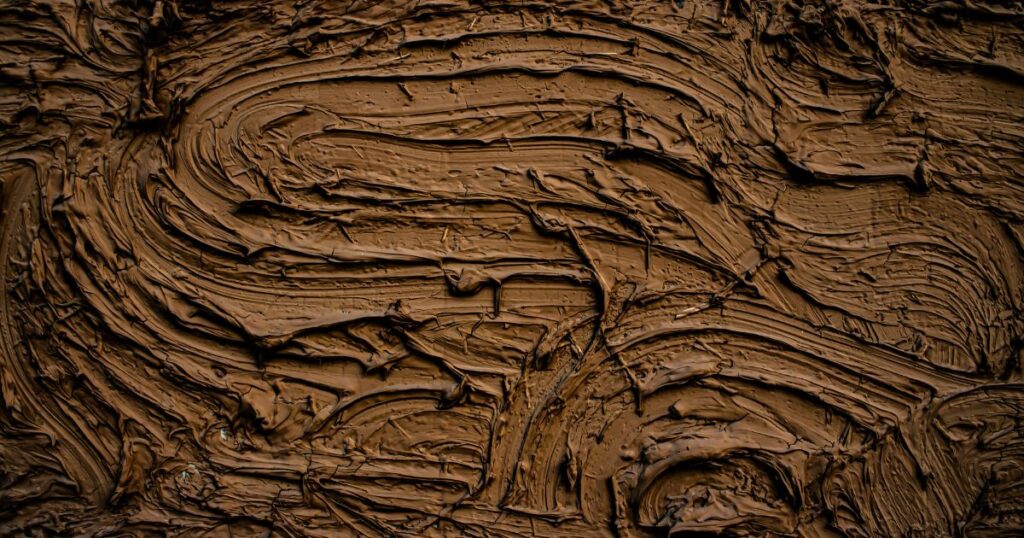
9. Diriyah: The Birthplace of a Kingdom
On the outskirts of Riyadh lies Diriyah, a site of immense historical significance to Saudi Arabia. It was here that the first Saudi state was founded in the 15th century. Today, Diriyah is a UNESCO World Heritage site, with the ancient mud-brick At-Turaif district serving as a reminder of the country’s roots. The area is undergoing extensive restoration and development to become a cultural and tourist destination. Visitors can explore the historical structures, learn about Saudi Arabia’s origins, and enjoy the blend of past and present in this historic location.
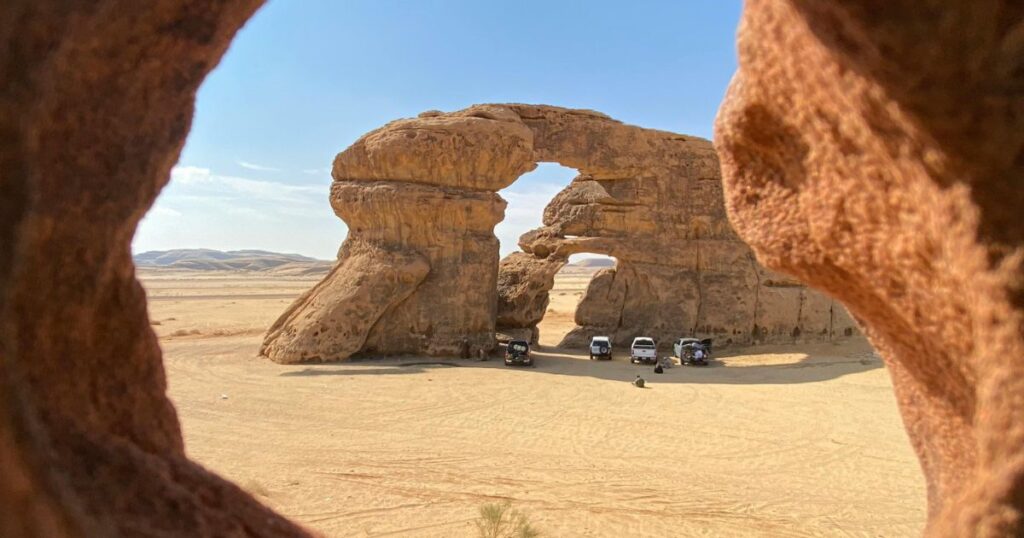
10. Farasan Islands: A Marine Paradise
The Farasan Islands, located off the southwestern coast of Saudi Arabia in the Red Sea, are an archipelago that offers an untouched paradise for nature lovers and adventure enthusiasts. The islands are recognized for their biodiverse marine life, pristine beaches, and clear waters, making them a perfect spot for snorkelling and diving. The Farasan Islands also hold historical significance, with ancient ruins and pearl fishing villages scattered across the islands. The rich coral reefs, mangrove forests, and the rare Arabian gazelle make the Farasan Islands a must-visit destination for those looking to explore Saudi Arabia’s natural wonders.
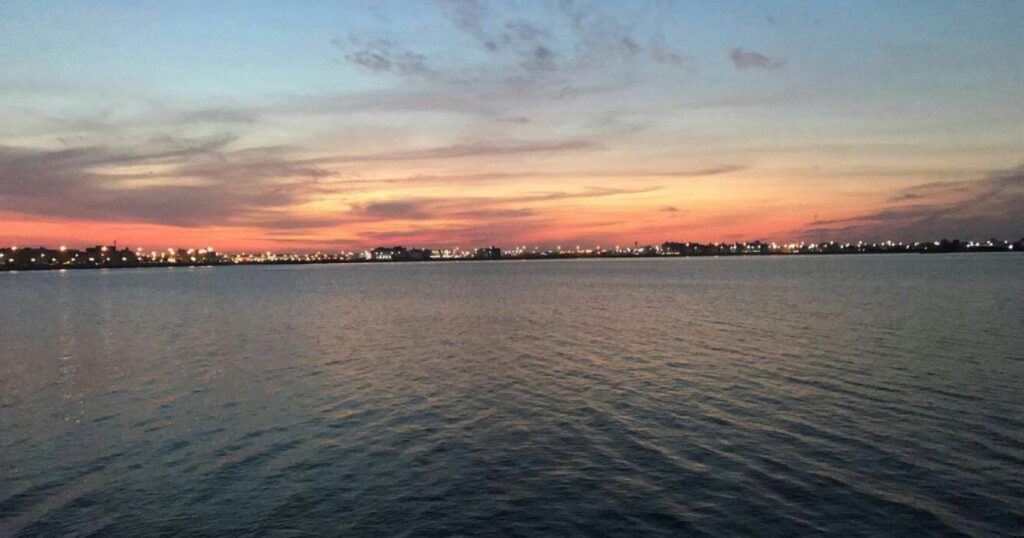
11. Abha: The Jewel of the Asir Province
Located in the Asir province, Abha sits at an elevation that grants it a cooler, more temperate climate than much of Saudi Arabia, making it a popular summer destination for both locals and tourists. This city is surrounded by dense forests and mist-covered mountains, offering breathtaking views and outdoor activities such as hiking, cable car rides, and visiting the Asir National Park. Abha’s cultural scene is vibrant, with the Al-Muftaha Village art district serving as a hub for artists and performers. The city also hosts the annual Abha Festival, which showcases local traditions, music, and cuisine, providing visitors with a rich cultural experience.

12. Dammam: The Heart of the Eastern Province
Dammam, the capital of the Eastern Province, is a key economic centre due to its proximity to the largest oil fields in the world. However, there’s more to Dammam than its oil-based economy. The city’s corniche is a beautiful waterfront area perfect for family outings and picnics, while the nearby Half Moon Bay offers some of the best beaches in Saudi Arabia. Al-Marjan Island is another attraction, an artificial island that has become a popular spot for relaxation and leisure activities. Dammam is also a gateway to exploring the broader Eastern Province, including Tarout Island with its ancient castle and the old town of Qatif with its bustling market.
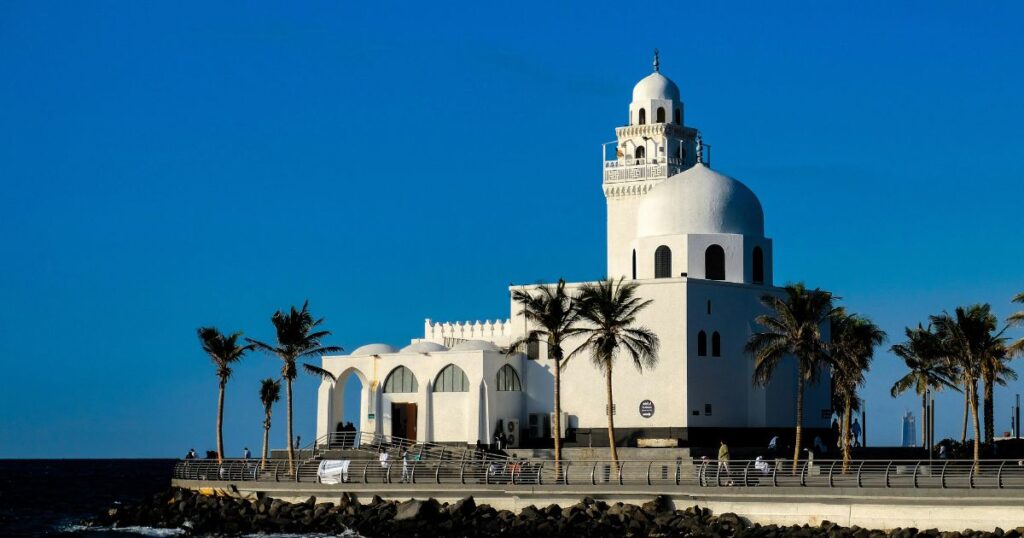
13. Edge of the World (Jebel Fihrayn): Dramatic Landscapes
One of Riyadh’s most popular natural attractions, the Edge of the World offers dramatic views that give the site its name. Part of the Tuwaiq Escarpment, this natural wonder features cliffs that drop precipitously to the desert floor below, offering panoramic vistas of the surrounding plains. The site is a paradise for hikers and outdoor enthusiasts looking for adventure in the rugged landscape. Visiting the Edge of the World provides a unique opportunity to escape the city and immerse oneself in the natural beauty of the Saudi desert.
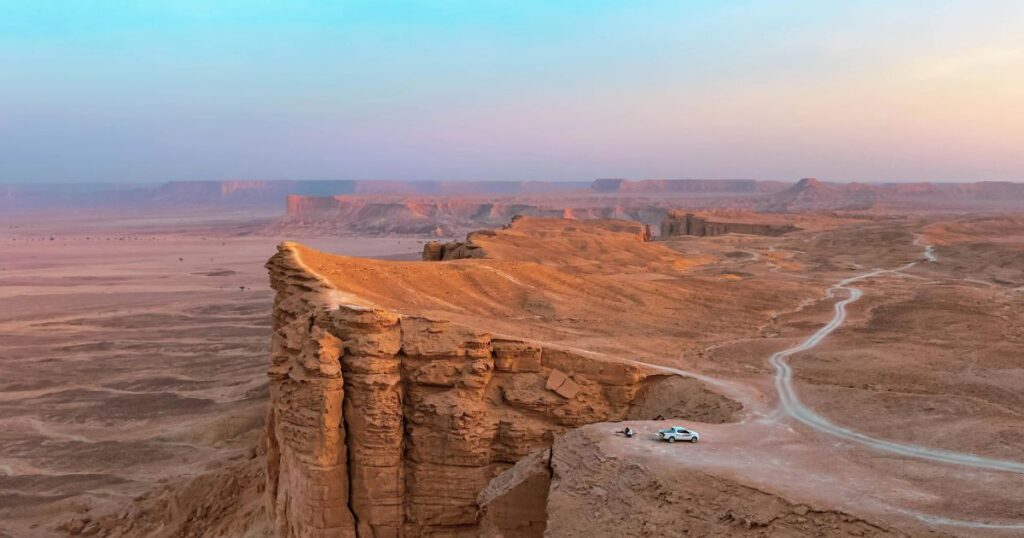
14. Qassim Province: The Orchard of Saudi Arabia
The Qassim Province is often referred to as the orchard of Saudi Arabia due to its abundant farms and date palm groves. The region is renowned for its agricultural produce, particularly dates, which are celebrated annually during the Buraidah Date Festival. This event attracts visitors from across the country and beyond, offering a glimpse into the agricultural heritage of the region. The province is also known for its traditional mud architecture, historical sites, and vibrant markets, making it a fascinating destination for those interested in the rural and cultural life of Saudi Arabia.
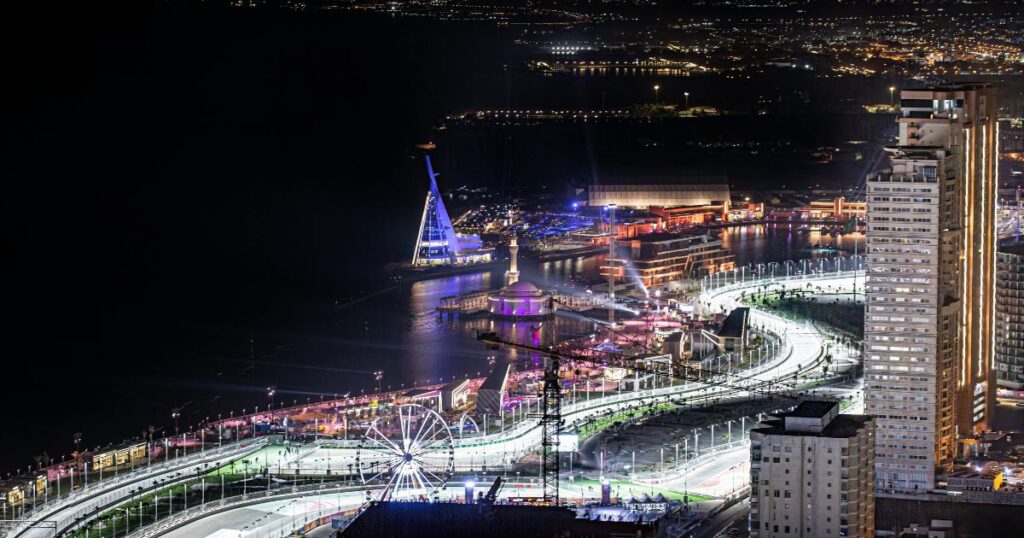
15. The Red Sea Project: A Glimpse into the Future
Looking towards the future, the Red Sea Project is an ambitious tourism initiative that aims to transform the Saudi Red Sea coastline into a luxury destination. This project promises to offer unparalleled experiences, blending natural beauty with sustainability and innovation. Visitors will have the opportunity to explore untouched islands, dive in pristine coral reefs, and enjoy high-end resorts and spas. While still under development, the Red Sea Project represents the kingdom’s vision for a sustainable and luxurious tourism future, highlighting Saudi Arabia’s commitment to opening up new horizons for travellers.
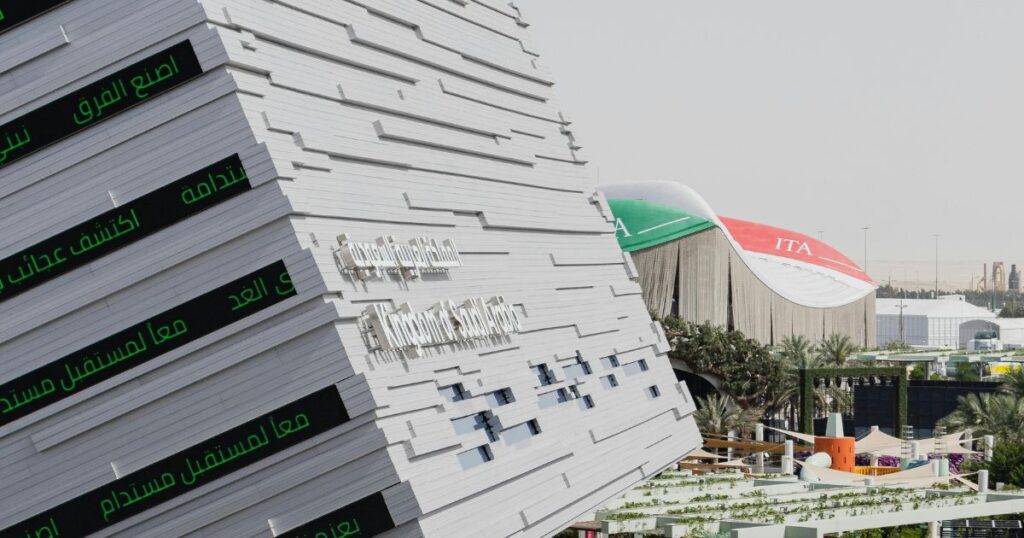
Closing Thoughts
Saudi Arabia’s landscape is a mosaic of historic wonders, cultural richness, and natural beauty, offering an array of experiences that cater to diverse interests. From the bustling streets of its modern cities to the quiet splendour of its deserts and lush highlands, the kingdom invites explorers to delve into its treasures. As Saudi Arabia continues to evolve and open up, it remains a land of discovery, where ancient history and future aspirations converge, promising unforgettable adventures to those who venture within its borders. Whether seeking spiritual solace, cultural enrichment, or outdoor excitement, travellers will find Saudi Arabia a destination that exceeds expectations, beckoning with the promise of discoveries.
42 Most Beautiful Places In The World To Visit 2023
The Best 15 Good Places to Visit In Egypt|Exploring Egypt
15 Best Travel Backpacks- How To Choose 2023
Aiman Khalid
I’m Aiman Khalid, your dedicated SEO Analyst. With a passion for digital marketing and a keen eye for optimizing online experiences, I’ve made it my mission to help businesses thrive in the digital realm. My journey into the world of SEO began with a fascination for search engines and their algorithms, and since then, I’ve honed my skills to become a seasoned professional. Armed with years of experience, I specialize in crafting SEO strategies that not only boost search engine rankings but also drive tangible results, such as increased website traffic and conversions. I’m here to demystify the world of SEO and empower your online presence, one keyword at a time.
-
© Copyright 2020 | www.pairstravel.com
